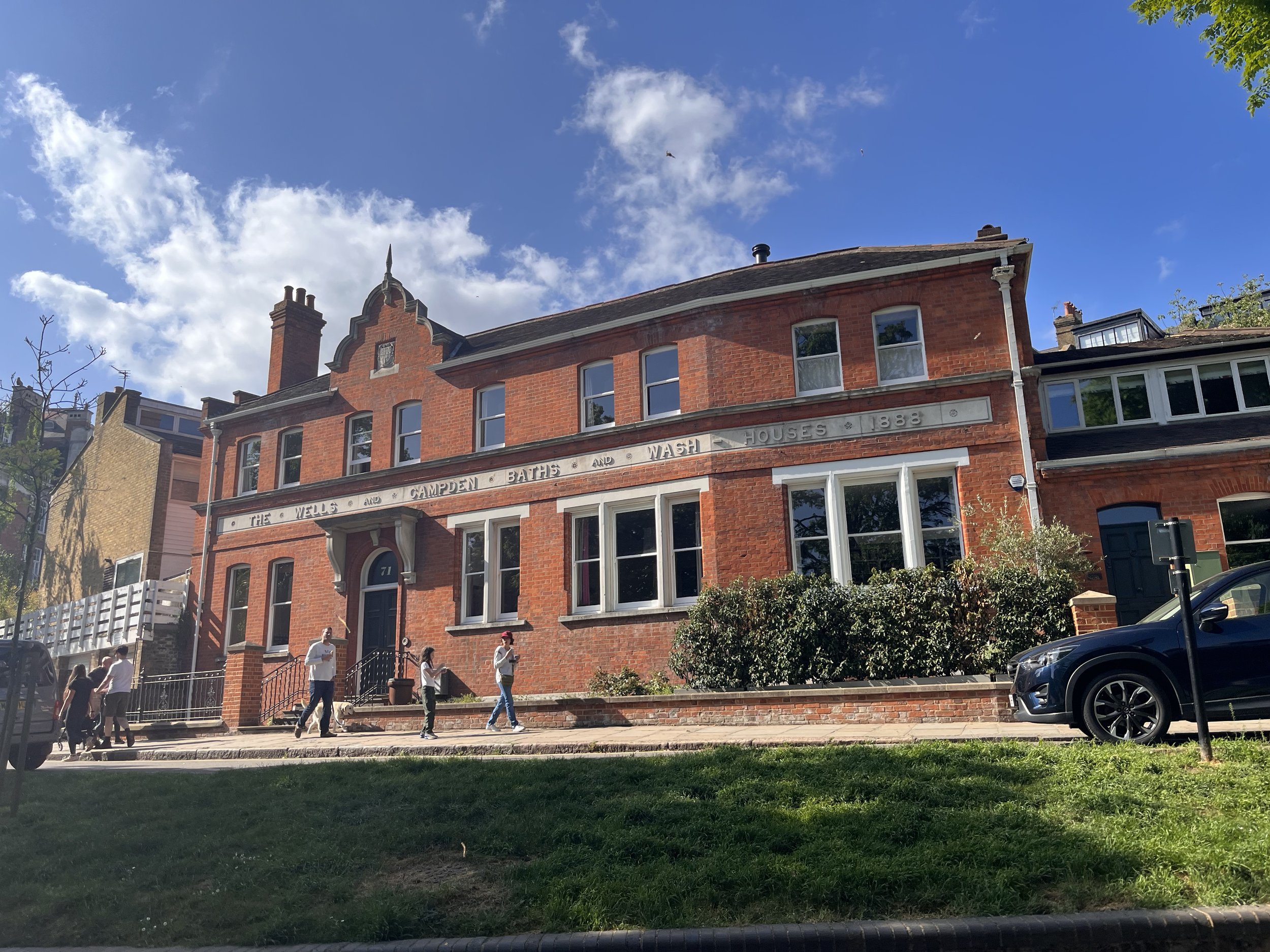I arrived in London yesterday and got a room in a guesthouse in Camden Town. It is one of the most threadbare guesthouses I’ve ever stayed in. It reminds me of this place I stayed in Penang, Malaysia on a visa run about 15 years ago. It felt very similar to this, actually - a room that was originally about 20 feet long that was then sub-divided with cheap construction to create 2-3 tiny apartments with only beds in them. No top sheet. No blankets. Just a mattress and a duvet and a bathroom across the hall. Squeaky floors. Thin walls (I can actually hear people farting in the bathroom down the hall with both doors closed). Living!
Woke up jet lagged at an ungodly hour and went into Hidden Coffee here in Camden. It was totally pleasant. Then I headed over to the Barbican to see this exhibit on Postwar British Artists. It was totally and completely depressing. A lot of the folks represented in this exhibition were either refugees from the Holocaust or were deeply affected by the bombings in London, and so all the works were very, very dark. A lot of deeply disturbing paintings and sculpture. I felt like I was going to barf pretty much the whole time.
I’ve been having this really weird feeling all day… a little out of body, having been up for most of the 10 hour flight here, just running on fumes and caffeine. A little delirious, the anxiety creeping up. I have this feeling I might just suddenly lose it… shit myself or puke or explode in the museum or in the streets and make a messy, messy spectacle in the midst of these smartly dressed Londoners.
Next up, the Museum of London, which was also pretty disturbing, but in different ways. For those who have never been, the Museum of London doesn’t really try to give you hard facts about what London was like through the ages—rather it attempts to give you the impression of what happened. So there’s a lot of photos and artifacts and even sights and sounds from the time periods, but it’s a little light on exact events.
You walk through the history of the town, from Roman Londinuim to the modern era. They have exhibits on gladiatorial combat, the Black Plague, the fires, the executions, the wars, the triumphs and the tragedies of the ages. Not sure if it was the vibe from the previous exhibition at the Barbican that set me off, but I was definitely picking up on some darkness there. London is a dark city where a lot of bad stuff has gone down.
This feeling of darkness all coalesced around the museum’s reenactments of 1800s era London. They had a whole section dedicated to what a pub would look like in the 1800s, what a barber shop would look like, what a pharmacy would look like, what a market would look like, etc… each vignette brought to life by the sounds of people conversing playing on hidden speakers. They did an amazing job with tons of very authentic looking artifacts from that era.
Something about that time was deeply weird to me. The bizarre costumes, the sound montages of people interacting, the horrifying photos of the plagues and the fires, the disturbing children’s toys, the bomb shelters and food rationing, the evidence of Jack the Ripper… I came out positively shook. London is kind of a messed up place where a lot of stuff has gone down over time, and not all of it was good. And that dark undercurrent is still very much there. It’s palpable. When you have all that violence and tragedy that have happened in a place over a long period of time, it has to leave a residue. Just like The Shining… Some places are like people — some shine, and some don’t. In this sense, London is positively glowing.
Anyway, then I went to the Hoop and Grapes, which was a great, ancient pub, nicely updated to be cozy and comfortable. You really can’t beat an old British pub for understated charm.



























